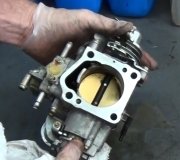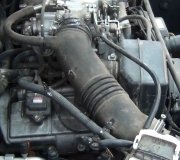. Just replaced the coils and plugs, which as you know involves removing the upper intake manifold. I made sure I was very careful when disconnecting and reconnecting hoses, connectors, etc, as I did not want to end up with a vacuum leak. I put new gaskets in the upper intake manifold, and applied the specified torque to the manifold bolts. After it was all back together, I followed the procedure to relearn the idle and fuel trim strategy, which involves driving the vehicle for at least 10 miles. During that drive, everything seemed fine, no engine light came on.
The next morning, started the vehicle, and the engine light came on. Received the codes "P2195 - O2 sensor stuck lean, bank 1, sensor 1" and "P2197 - O2 sensor stuck lean, bank 2, sensor 1", which is most likely a vacuum leak.
Why would this not occur during the immediate drive right after the repair, but instead the next day? Does this clue any experts out there as to what the problem might be? Any help is truly appreciated.
SPONSORED LINKS
Wednesday, March 23rd, 2011 AT 7:29 PM




